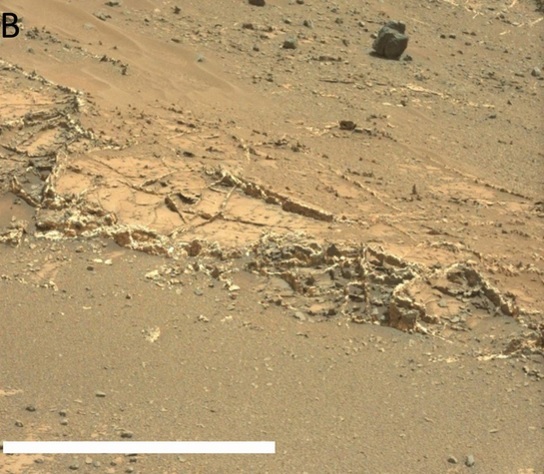.

-
Sulfate veins prominent at Darwin outcrop veins, observed on sol 402, NavCam NRB_432923862. Field of view 1.3 m. B) Garden City image, observed on sol 924, MastCam ML004061. White sulfate veins cut through the surrounding sediments. Scale bars are 1m
Mineral veins found in Mars’s Gale Crater were formed by the evaporation of ancient Martian lakes, a new study has shown.
The research, by Mars Science Laboratory Participating Scientists at The Open University and the University of Leicester, used the Mars Curiosity rover to explore Yellowknife Bay in Gale Crater on Mars, examining the mineralogy of veins that were paths for groundwater in mudstones.
The study suggests that the veins formed as the sediments from the ancient lake were buried, heated to about 50 degrees Celsius and corroded.
Professor John Bridges from the Department of Physics and Astronomy said: “The taste of this Martian groundwater would be rather unpleasant, with about 20 times the content of sulphate and sodium than bottled mineral water for instance!
“However as Dr Schwenzer from The Open University concludes, some microbes on Earth do like sulphur and iron rich fluids, because they can use those two elements to gain energy. Therefore, for the question of habitability at Gale Crater the taste of the water is very exciting news."
The mudstones with sulphate veins in the Gale Crater were also found to be close in composition to rocks in Watchet Bay in North Devon, highlighting a terrestrial analogue which supports the model of dissolution of a mixed silica and sulphate-rich shallow horizon
to form pure sulphate veins.
Quelle: University of Leicester
